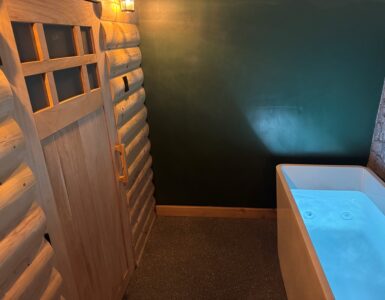There’s back pain after a hard day’s work, and then there’s back pain that shows up no matter what you do.
Dr. Vikas Garg with the Lakeview Pain Center has the symptoms and solutions for the most common back problems.
Why it is important to treat back pain?
Pain becomes problematic when it lingers for a long time. Persistent, on-going pain can cause a significant impact, both physically and emotionally. It can even affect different organ systems such as increasing heart rate, nausea, vomiting, muscle spasm, and sleep deprivation. Our goal is to treat your pain and improve your quality of life.
At what point should I see a pain specialist?
A number of back pain problems tend to resolve on their own. Talk to your doctor or a pain physician if the pain is not getting better in 2-3 weeks. If you are experiencing pain radiating down the legs, weakness of legs, or any bladder or bowel incontinence, you should see a pain specialist.
What can be the possible causes of low back pain?
There are a variety of different pain generators in the lower back area. The cause of pain can be a disc, which is a soft cushion kind of material in-between the vertebra; the joints, which are between the vertebra called facet joints or z joints (zygapophysial joints); or, it can be a nerve, muscles or other soft tissue. The cause of back pain can be from a trauma such as an auto accident or fall; or, it can be from normal wear and tear which is considered degeneration.
Can pain be prevented?
Yes, a number of things can be done to help prevent back pain. Some of these include regular exercise, eating healthy, using proper body ergonomics and posture, and lifting heavy objects properly.
Would an MRI show the cause of pain?
Not always…A number of studies have shown that an MRI does not always tell us whether a herniated disc is the source of the pain, or if the pain is coming from a different area. For instance, a study was performed where 30, thirty- year-old young, healthy people with no pain symptoms all had an MRI. Fifteen out of those thirty people with no back pain showed a herniated disc on their MRI. So, MRIs can give us some information, but an assessment needs to be completed (along with other information such as the patient’s history and a physical examination) to find and treat the source of back pain.
What are the treatment options for back pain?
We believe using a multi-disciplinary approach is the best way to treat pain conditions. This means using a variety of specialists to help you feel better, quicker. Some of these may include physical therapy, medications, a psychological assessment, and other nonsurgical interventional approaches.
What do you do at Lakeview Pain Center?
We see patients with many different pain conditions. The most common are: low back pain, neck pain, whiplash injury, headaches, disc disease and neuropathy. Our first goal is to make a diagnosis and develop a treatment plan depending on the diagnosis. Our focus is multi-disciplinary, minimally invasive, non-surgical interventional approaches to reduce pain and improve quality of life. This may include injections such as epidural injections, nerve blocks, facet joint injections and radiofrequency ablation or rhizotomy, where a nerve can be deadened to assist in decreasing pain.
Tell us more about injection therapy?
Sometimes injection therapy is the best possible way to alleviate pain. Essentially, injection therapy is a treatment option wherein a small amount of local anesthesia and a steroid is injected into the appropriate area of the back. These procedures are completed under an x-ray machine called fluoroscope.
Some people believe that injection therapy is like a “pain cover up.” This is simply not true. Research was conducted over a six year period by spine surgeons at Washington University. Their research found that 75% of patients who had injections decided not to have surgery because the injections adequately managed their pain.
Are there any new developments and trends you are utilizing?
Yes, there are number of new developments and trends we are using these days. Some of these include radiofrequency rhizotomy or ablation. This is where we essentially deaden the sensory nerve to improve pain. For more information about these treatment options or others that we utilize at Lakeview Pain Center, please call us at 801-299-OUCH (6824).
Lakeview Hospital is part of MountainStar Healthcare. MountainStar Healthcare is not bigger; just better. They are large enough to provide sophisticated procedures and leading-edge technologies, and small enough to preserve the human compassion in healing, one patient at a time. Their hospitals and outpatient centers deliver high-quality, cost-effective patient care – when and where it’s needed.
MountainStar Healthcare is the Utah-based headquarters of the HCA Mountain Division. It was established in January 2006 to centralize operations and management for six hospitals in Utah and two hospitals in Idaho. In 2008, the division expanded to include Alaska Regional Hospital. For more information, visit www.mountainstar.com.














Add comment